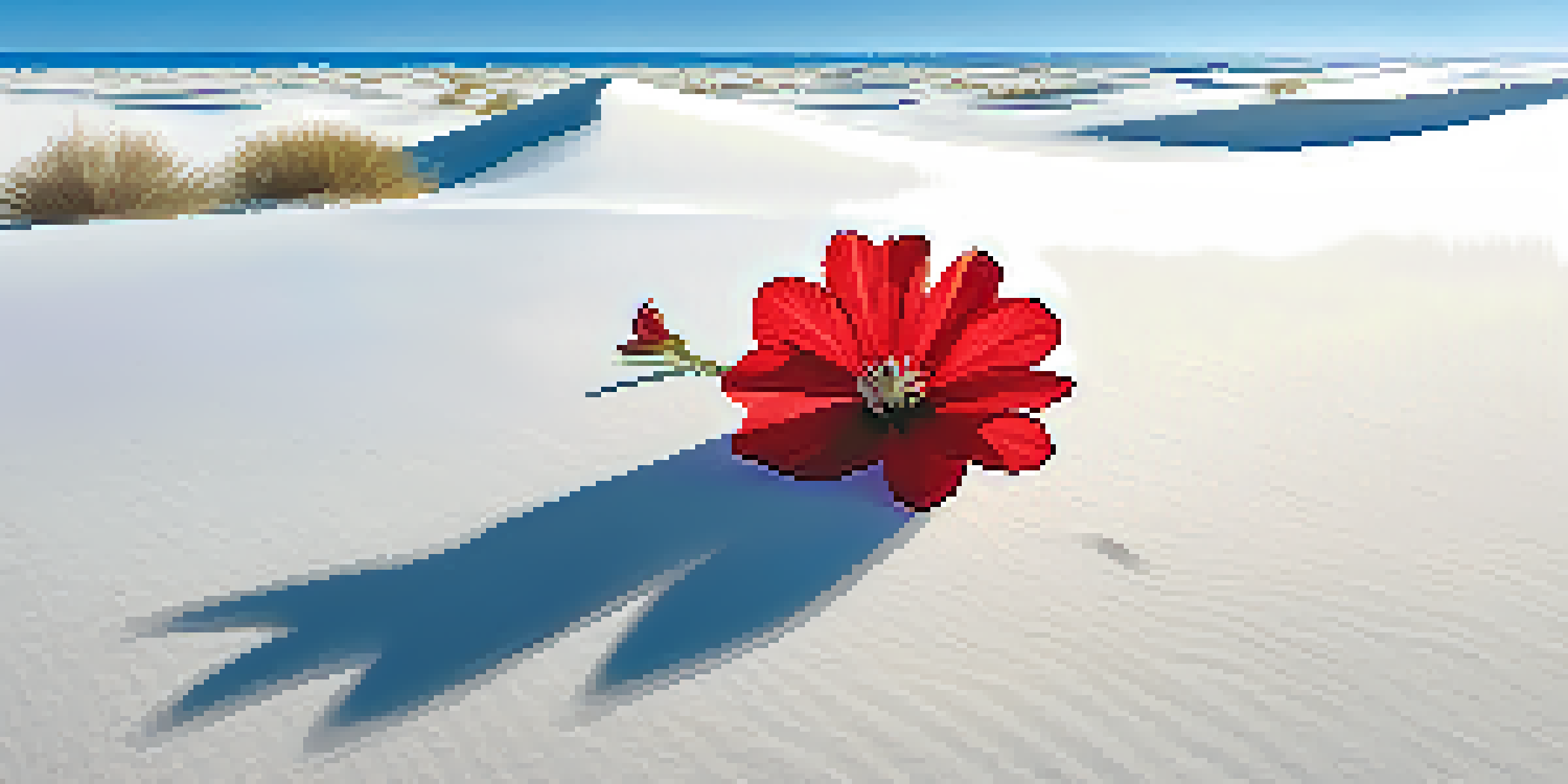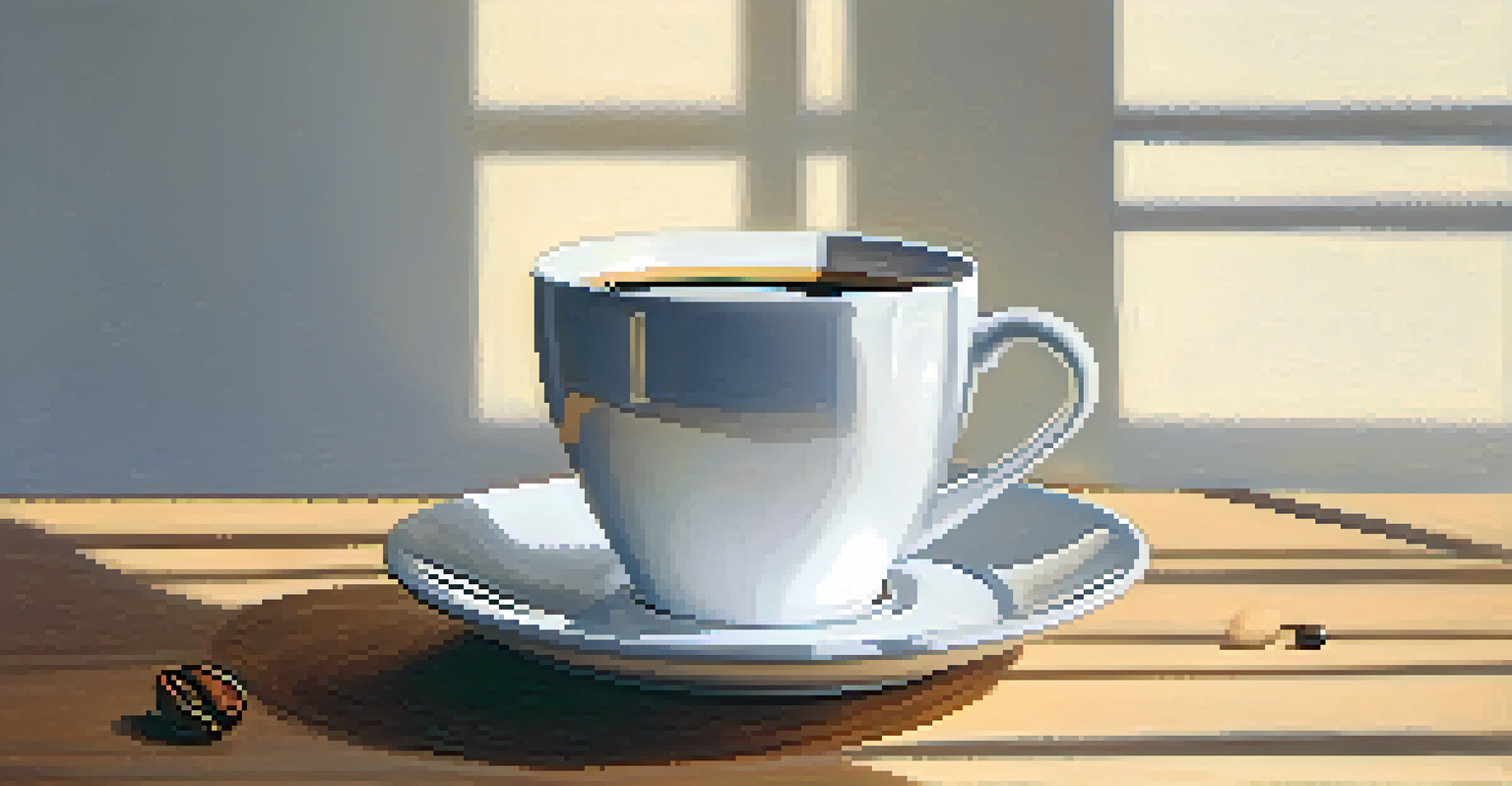Exploring Minimalism Through Photography: A Visual Journey

Understanding Minimalism in Photography
Minimalism in photography is all about stripping away the unnecessary. It focuses on simplicity and finding beauty in the bare essentials. By emphasizing clean lines, negative space, and a limited color palette, photographers can create striking images that evoke strong emotions.
Simplicity is the ultimate sophistication.
Think of minimalism as decluttering your mind and your surroundings. Just like a clear desk can help you focus better, a minimalist photograph directs the viewer's attention to what truly matters. Instead of being overwhelmed by detail, minimalism invites contemplation and appreciation.
This artistic approach encourages photographers to look beyond the obvious and seek deeper meanings in their subjects. Whether it’s a lone tree in a vast field or a single, boldly colored object against a neutral background, minimalism can transform the ordinary into something extraordinary.
The Power of Negative Space in Composition
Negative space refers to the empty areas surrounding the main subject of a photograph. This space is not just 'empty'; it plays a crucial role in how we perceive the image. By intentionally using negative space, photographers can enhance the overall impact of their work.

For example, imagine a photograph of a single flower against a vast, open landscape. The flower stands out not just because of its color but also because of the surrounding emptiness that draws attention to it. This contrast creates a visual balance that captivates the viewer's eye.
Embrace Simplicity in Photography
Minimalist photography focuses on stripping away the unnecessary to highlight beauty in simplicity.
Embracing negative space can lead to more thoughtful compositions. Instead of cluttering an image with too many elements, leaving areas of emptiness allows for deeper reflection and connection with the subject.
Choosing the Right Subject for Minimalist Photography
When it comes to minimalist photography, less is often more. Selecting the right subject is key to conveying the essence of minimalism. Look for items or scenes that have strong shapes, textures, or colors that can stand alone without the need for additional context.
The more I simplify, the more I feel I am able to express.
A simple stone on a beach can tell a compelling story when photographed in isolation, especially when framed correctly. The beauty lies in its simplicity, which allows viewers to interpret the image in their own way.
Ultimately, the goal is to evoke emotion and thought. By carefully choosing subjects that resonate with your vision, you can create powerful minimalist photographs that speak volumes without saying much at all.
Lighting Techniques for Minimalist Photography
Lighting plays a pivotal role in photography, and in minimalism, it can make or break an image. Natural light is often the best choice for minimalist photography, as it creates soft shadows and highlights that can enhance the subject's simplicity. Early morning or late afternoon light, known as golden hour, provides a warm, inviting glow.
Consider how shadows can add depth and dimension to your composition. A well-placed shadow can transform an otherwise flat image into a dynamic piece of art. Experimenting with backlighting can also create striking silhouettes that emphasize the subject.
Utilize Negative Space Effectively
Negative space enhances the visual impact of minimalist images by drawing attention to the main subject.
Ultimately, the right lighting can elevate your minimalist photographs from good to exceptional. It’s about finding the light that best showcases your subject while maintaining the clean aesthetic that defines minimalism.
Post-Processing Tips for Minimalist Images
Post-processing is an essential step in photography that can help refine your minimalist images. Software like Adobe Lightroom or Photoshop allows you to enhance colors, adjust contrasts, and fine-tune details while maintaining a minimalist ethos. The key is to keep adjustments subtle and avoid over-processing.
Consider using presets that emphasize simplicity, focusing on clarity and brightness. This can help ensure that your images maintain their clean lines and minimalistic appeal. Remember, the goal is to enhance the image without overshadowing its inherent simplicity.
A minimalist approach to editing encourages you to focus on what truly matters in your photograph. By stripping away distractions, you can create a polished final product that speaks to the elegance of simplicity.
Finding Inspiration in Everyday Life
One of the most beautiful aspects of minimalist photography is that inspiration can be found anywhere. Everyday objects and scenes can become powerful subjects when viewed through a minimalist lens. Take a moment to explore your surroundings—what might seem mundane can be transformed into art.
For instance, a simple coffee cup or a shadow cast by an object can lead to stunning minimalist photographs. By training your eye to see potential in the ordinary, you can develop a unique perspective that sets your work apart.
Find Inspiration in Everyday Objects
Everyday scenes and objects can become powerful subjects in minimalist photography when viewed with a creative lens.
Keep a visual journal of ideas or favorite subjects that inspire you. This practice not only builds your creativity but also encourages you to appreciate the beauty in simplicity every day.
Sharing Your Minimalist Journey with the World
Once you've explored and captured minimalist photography, sharing your work can be a rewarding experience. Platforms like Instagram, photography blogs, or even local galleries are excellent avenues to showcase your art. When sharing, consider how you can convey the story behind each photograph.
Engage with your audience by discussing your creative process and the thoughts that led to each image. This transparency can create a deeper connection with viewers, inviting them to appreciate not just the final product but the journey behind it.

Remember, the minimalist approach is not just about the visuals; it's also about the emotions and ideas you evoke. Sharing your journey allows others to explore minimalism alongside you, fostering a community of like-minded individuals.